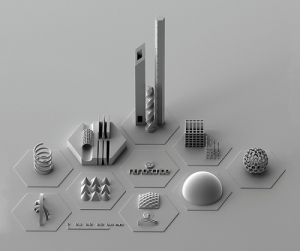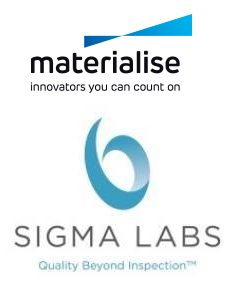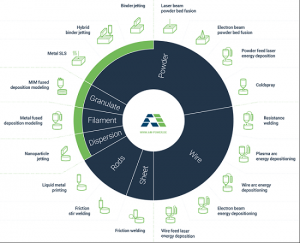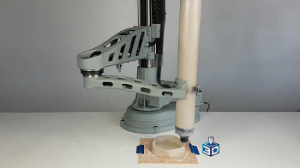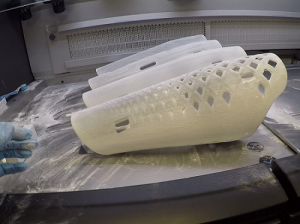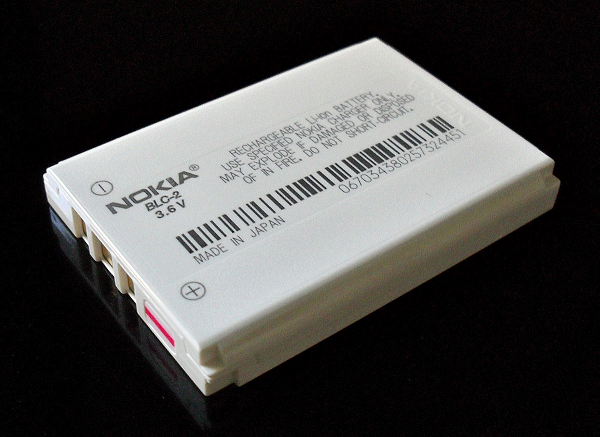When I first heard from an F1 team that they were using an SLA machine made in the UK I was a bit confused. What was this mysterious RPS company? What did they do? How were they able to make and deliver specialized resins? Tucked away in Buckinghamshire in a 53,000 person town with a Roald Dahl kids museum, RPS Limited manufactures SLA systems that are widely used in many niche manufacturing applications. For over a decade the firm has serviced machines and now makes it’s own as well, the NEO while the firm also resells HP MFJ systems and others. RPS is a hybrid of a company that is an OEM, reseller and service company in one. They’re also real SLA nerds and are magicians in creating specialized 3D printing applications for manufacturing using photopolymers and powders. They’re a highly experienced team that routinely solves some very exciting materials and manufacturing challenges for the most demanding of customers. We interviewed RPS’ Steve Moran to find out more.
What is RPS?
We are an industrial 3D printing specialist, based in Aylesbury, UK. The company was founded in 2008 initially servicing and supporting customers who owned existing 3D printing systems. The company has since developed its own industrial 3D printing equipment (NEO800) and grown to become a leader in industrial 3D printing technology and service support. RPS also resell other well-known industrial 3D printing brands providing materials, hardware and software.
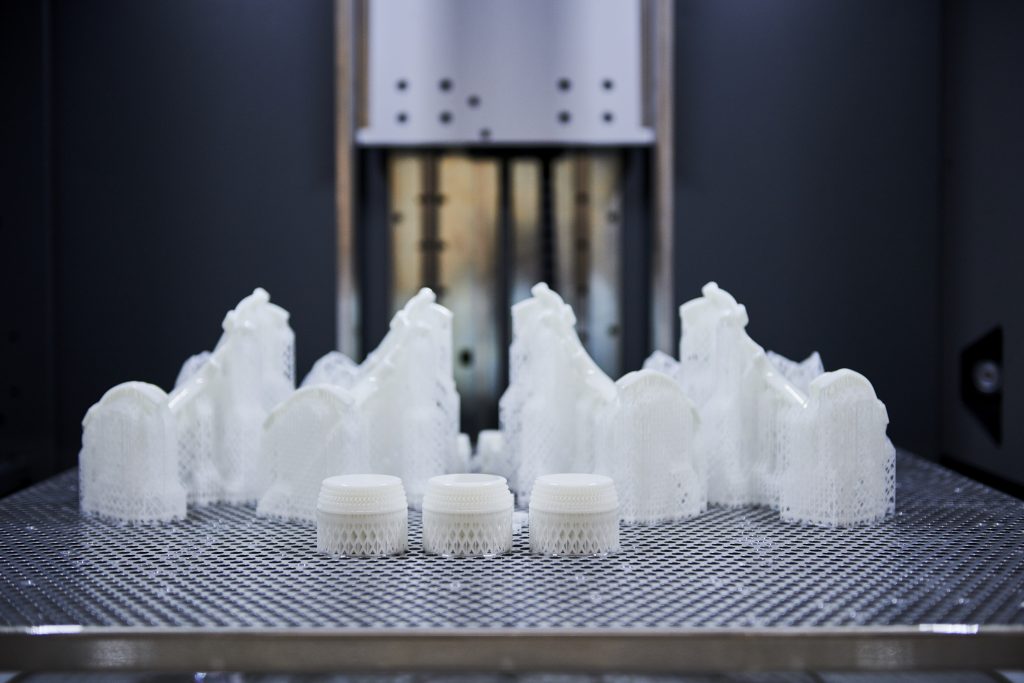
How did you get started in 3D printing?
In 1994 the industry was known as Rapid Prototyping. I was employee number five at 3D Systems in the UK where I was a Customer Support Engineer. After five years at 3D Systems, I decided to offer customers an alternative source of support, upgrades to their SLA machines and alternative materials.
Why should people work with you?
3D printing is a technology that is driving change in manufacturing and design across a range of industries. RPS has a huge resource of skilled people with 150+ years of 3D printing knowledge between them. We are making an impact in our customers’ businesses and fast becoming a market global leader in industrial 3D printing.
The team at RPS are offered opportunities to develop their role and are given the autonomy to make a difference within the company. This again has a benefit for end users, as employees are highly motivated and enjoy their chosen role. We offer fantastic work packages, benefits, training and the ability to have a flexible working pattern when necessary, to suit modern family life.

What is the 3D printing market like in the UK?
I see the three main segments driving the UK market as being F1, Automotive and Bureaux with manufacturers also looking to adopt and add capability in house.
CNC companies and Jigs and Fixture manufacturers are starting to adopt 3D printing as they are now understanding the benefits of additive vs subtractive manufacturing, which are cost, time and weight savings. Companies are also able to develop detailed parts that you can’t manufacture traditionally, and also able to get their products to market faster.
This has been driven by the new and innovative materials (both resin and powder), that are now available which helps customers look at changing to 3D printing and adapt to an additive manufacturing method. Customers can also choose from a range of 3D printing technologies that now build parts with greater accuracy with the desired mechanical properties to suit their application than in the past.
Which segments are growing?
We are seeing more companies wanting speciality material to be used for specific applications. An F1 customer approached us to help them create a new, black glass filled material. Working with ALM (Advanced Laser Materials, a subsidiary of EOS), we helped customise and formulate a laser sintering powder to achieve the mechanical properties and colour required.
Although the range of 3D printing material options is growing, they still do not have the optimal properties to produce complete end-use parts, in particular with stereolithography.

What new 3D printing materials do you see making an impact?
We are excited about the manufacture of new photopolymers/resins that will be available in the market in the future. At the moment the lack of materials available with the mechanical properties needed for end-use part development is holding 3D printing back. The potential of new materials in the market can only happen with hardware to assist in this development, which is why we developed the NEO800 with an open resin platform. We have also recently developed the NEO Resin Development Kit to help customers with the development of these new photopolymers.
Everyone loves the accuracy and surface finish of stereolithography but the mechanical properties have always been lacking. This is starting to change with more investment by new suppliers in this market. It will be great to see end use parts in automotive with textures and finishes straight out of the equipment with little or no finishing.
The NEO resin development kit gives customers the platforms, calculation tools and software to help customers develop material easily. We have already been approached by material development companies wanting to use the NEO800 as a tool to develop their materials and have exciting ideas, so I am confident this this step-change in new materials with end-use mechanical properties will happen soon.
What advice would you give me if I were a company new to 3D printing?
3D printing offers a range of cost and time-saving benefits compared to traditional manufacturing. At RPS we provide advice and talk through what the customer is doing today. By looking at all their processes to manufacture products, we can advise where technologies fit, with which tasks etc. Only then can customers make informed decisions about how 3D Printing would work with their application. For example, would ceramic moulds via SL help to get an injection moulded product through the initial testing in real materials prior to tooling being made and commissioned? If so, look at stereolithography 3D printing technology. Or if you were looking at a small run of final production parts, possibly looking at HP’s Multi-Jet Fusion technology as it prints end-use parts with strong mechanical properties. You need to know what application you want to print and the technology you want to print from. Analyse the output of each technology and seek independent advice to weigh up the pros and cons of each.
What is currently exciting in SLS materials?
RPS provides a great range of ALM SLS materials that can suit applications ranging from automotive to footwear. For example, ALM’s HT-23 is a high heat deflection powder that can maintain mechanical properties up to 270 °C perfect for F1. Or there is the ALM FR-106 aerospace grade fire retardant Nylon 11, that exhibits superior mechanical properties and can withstand intense functional testing. In particular, the ALM 640-GSL gives customers a black glass filled material that is unlike any in the market. The glass spheres are lightweight and produce stiff parts, making the material perfect for F1, automotive and lightweight applications like drones.
When do I need a custom material?
Nearly every 3D printing application requires a custom material to meet the mechanical properties required. Every existing material out there is a comprise at the moment so the opportunity to formulate specific material (laser sintering) required through RPS and ALM is a great way to achieve this. In regards to SLA, we knew what customers wanted when servicing and supporting their hardware. One of these features was an open-platform to give customers this freedom of material selection. This is why we developed and manufactured our NEO800 with an open-resin platform, which gives customers an opportunity to develop their own materials.
Where are your customers using the HP machines?
Bureaus, end use part manufacturers, automotive and tooling manufacturers are just some of the industries that our customers belong to that use the HP Multi-Jet Fusion technology. It is a great, easy-to-use system to run small, end use parts which we actually utilise at RPS in house. Using the HP Multi-Jet Fusion we print the air-filter assembly used on our NEO800 system. This allows us to print a small run of parts when needed, saving time and costs. We also have a partnership with Oxford Brookes Racing. With the help of RPS, OBR18 built an engine intake plenum in Nylon 12 using HP’s Multi-Jet Fusion technology. 3D printing the plenum on HP’s MJF saved OBR over 50% in weight savings compared to the OBR18 car where they used aluminide. This is a great example of how the HP’s Multi-Jet Fusion 4200 is perfect for producing detailed, end use parts faster and at a lower cost than traditional manufacturing.
How has the development of photopolymers improved over the years?
Twenty years ago if you dropped an SLA part it would shatter. The first generation of polymers produced amber, brittle and inaccurate parts. The next generation has seen more durable and accurate parts due to epoxy chemistry. I can envision the next generation of photopolymers to mimic end-use parts. This is why we chose to manufacture an open-source stereolithography system to enable users to develop materials to achieve this.
How did you come to design and sell your own machine?
When we started RPS, the team focused on servicing and supporting customers with SLA and SLS hardware. During our time supporting customers we were listening to their needs and understood the limitations of some of the hardware that was available at that time. We felt that this was a great opportunity to use our engineering skills to develop stereolithography hardware that could produce outstanding parts, but in a system that was more user friendly.
What is different about it?
What makes the NEO800 different to many stereolithography systems is that it’s an open resin system which means it can utilise any 355 nm SL material. Companies are approaching us wanting to use the NEO800 for material development which is great news for the future of photopolymers in the industry. With our support background understanding of what customers wanted, we knew we had to develop software that was user friendly and adaptable to the needs of the customer, so we developed the NEO800 Titanium software. The NEO800 has a built-in camera to monitor builds, which can be adjusted during the print without a pause to see changes in the next layer. Mid-build, recoating build styles and part build styles can be changed, or parts and supports can be deleted. We always encourage customer feedback and try to incorporate any ideas that may be useful for our customer in our software updates. Example: The system is now able to export reports, detailing monthly builds, machines utilisation, resin consumption etc, which is really important to our end users. Because our software is written in-house we are able and willing to add these type of features and respond to our customers needs.
I’ve heard that it is used a lot in Formula 1?
Yes. Formula 1 requires accurate and smooth parts for wind-tunnel testing and prototyping that they achieve with the NEO800. They find the sidewall quality of the parts produced on the NEO a benefit as it reduces the post processing time by up to 50% and with the 800x800x600mm platform, it offers the size that they require.
Is it meant for production?
The NEO800 is mainly used for applications such as prototyping and model making, however the next generation of material development will change this. With new and innovative materials, users will have the capability to build end-use parts for production using stereolithography. When this material is available, it will open more doors and opportunities in manufacturing that can only be achieved with 3D printing.
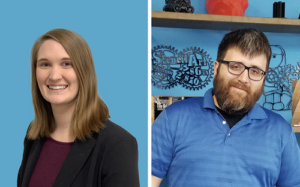 The Additive Manufacturing Users Group (AMUG) just announced the two recipients of its annual scholarships, who will now be recognized at the AMUG Conference in Chicago next month. The Guy E. Bourdeau Scholarship is awarded to one college student with a passion for AM, and this year it went to Katherine (Kate) Schneidau, who is pursuing a master’s degree in mechanical engineering at the University of Louisville. Chris Kaminsky, the Lakeshore Fab Lab manager at Muskegon Community College, received the Randy Stevens Scholarship, which is awarded to one educator who emphasizes or focuses on AM. Schneidau learned about SL, DLP, FFF, SLS, DMLM, and other methods of 3D printing through her engineering co-op, and taught others how to use the equipment, in addition to developing new process parameters for plastic and metal materials. Kaminsky makes 3D printing and design accessible to others by co-founding the MI3D organization, and is also a guest speaker about the technology.
The Additive Manufacturing Users Group (AMUG) just announced the two recipients of its annual scholarships, who will now be recognized at the AMUG Conference in Chicago next month. The Guy E. Bourdeau Scholarship is awarded to one college student with a passion for AM, and this year it went to Katherine (Kate) Schneidau, who is pursuing a master’s degree in mechanical engineering at the University of Louisville. Chris Kaminsky, the Lakeshore Fab Lab manager at Muskegon Community College, received the Randy Stevens Scholarship, which is awarded to one educator who emphasizes or focuses on AM. Schneidau learned about SL, DLP, FFF, SLS, DMLM, and other methods of 3D printing through her engineering co-op, and taught others how to use the equipment, in addition to developing new process parameters for plastic and metal materials. Kaminsky makes 3D printing and design accessible to others by co-founding the MI3D organization, and is also a guest speaker about the technology.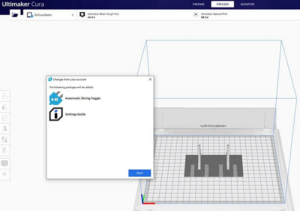 To celebrate its milestone of preparing 2,000,000 print jobs per week through Cura slicing software, Ultimaker launched a new online Marketplace, along with the release of Ultimaker Cura 4.5 and its additional features. Cura now has over 600,000 active users a month, and at the end of 2019, it was preparing twice as many print jobs per week as it had in 2018. Ultimaker Marketplace gives users access to plugins for standard software platforms, while the latest software release connects the Marketplace to Cura with new cloud functionality, which associates the plugins and optimized printing profiles directly with the user.
To celebrate its milestone of preparing 2,000,000 print jobs per week through Cura slicing software, Ultimaker launched a new online Marketplace, along with the release of Ultimaker Cura 4.5 and its additional features. Cura now has over 600,000 active users a month, and at the end of 2019, it was preparing twice as many print jobs per week as it had in 2018. Ultimaker Marketplace gives users access to plugins for standard software platforms, while the latest software release connects the Marketplace to Cura with new cloud functionality, which associates the plugins and optimized printing profiles directly with the user.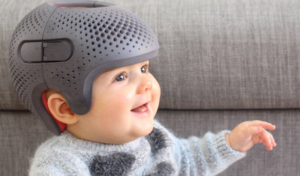 UK company Technology in Motion specializes in plagiocephaly (flat head syndrome) solutions for babies and children – namely, remolding helmets that are 3D printed so they’re more lightweight and comfortable. According to research, orthotic helmet treatment is the best way to treat severe head shape deformity, and the customizable TiMbandAir helmet (also known as the Talee in EU countries) is made with patent-pending bio-responsive technology for a better, more breathable fit – allowing the head to correct as it grows over four to six months. It has a unique three shell construction: the inner layer is a soft easy-clean liner to minimize sweating, while the mid-layer is important for shock absorption and offers flexible, gentle pressure, and the outer layer holds shape, gives strength, and provides protection. Thanks to 3D printing, these shells are also thinner than in other similar helmets, and the helmet features a breathable design to promote ventilation. Technology in Motion takes a photographic 3D scan of the baby’s head, and 3D printing, provided by partners at Invent Medical, ensures a custom fit. In 2018, the company received the prestigious Red Dot: Best of the Best design award for its recently launched TiMbandAir helmet, available in Technology in Motion clinics across the UK.
UK company Technology in Motion specializes in plagiocephaly (flat head syndrome) solutions for babies and children – namely, remolding helmets that are 3D printed so they’re more lightweight and comfortable. According to research, orthotic helmet treatment is the best way to treat severe head shape deformity, and the customizable TiMbandAir helmet (also known as the Talee in EU countries) is made with patent-pending bio-responsive technology for a better, more breathable fit – allowing the head to correct as it grows over four to six months. It has a unique three shell construction: the inner layer is a soft easy-clean liner to minimize sweating, while the mid-layer is important for shock absorption and offers flexible, gentle pressure, and the outer layer holds shape, gives strength, and provides protection. Thanks to 3D printing, these shells are also thinner than in other similar helmets, and the helmet features a breathable design to promote ventilation. Technology in Motion takes a photographic 3D scan of the baby’s head, and 3D printing, provided by partners at Invent Medical, ensures a custom fit. In 2018, the company received the prestigious Red Dot: Best of the Best design award for its recently launched TiMbandAir helmet, available in Technology in Motion clinics across the UK.



